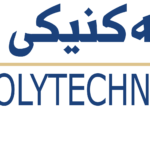- ibrahim shamal abdulkhaleq
- [email protected]
- 0750 749 7686
- AFTER_EDIT_LAST_LAST (1)
-
In the rapidly evolving landscape of online content, the prevalence of clickbait poses a significant challenge for users seeking reliable and informative material. Clickbait, characterized by sensationalized headlines designed to attract attention and drive user engagement, has become a pervasive issue in various languages and cultural contexts. As digital platforms continue to host a vast array of content, the need for robust clickbait detection mechanisms becomes paramount to ensure a trustworthy online experience. This study aims to evaluate the performance of deep neural networks in clickbait detection for both English and Kurdish languages. To address clickbait in Kurdish, we collected 10,000 news articles from various Kurdish platforms, complemented by a dataset of 32,000 English headlines curated by Chakraborty. Utilizing Long Short-Term Memory (LSTM), Bidirectional Long Short-Term Memory (BILSTM), Convolutional Neural Network (CNN), Gated Recurrent Unit (GRU), and a hybrid CNN BILSTM model, we evaluated clickbait detection techniques. Findings underscore the importance of understanding language-specific traits and cultural norms in spotting clickbait across linguistic boundaries. The Bidirectional Long Short- Term Memory algorithm proved most effective in English, boasting a 99.23% accuracy rate, 95.33% precision, 94.33% recall rate, and a 95% F1 score. In Kurdish, the Gated Recurrent Unit algorithm excelled with a 93.93% accuracy rate, 93.13% precision, 95.17% recall rate, and a 94.13% F1 score. This study extends the application of recurrent neural network and deep learning methods in clickbait detection, showcasing their potential in analyzing textual data with nuanced semantic features, contributing valuable insights to the broader field of natural language processing.
- Erbil Technical Engineering College
- Information Systems Engineering
- Machine Learning
- Chnar Mustafa Mohammed
- [email protected]
- 0750 172 1498
- Chnar_Thesis_Last V_December_11
-
Emerging fifth-generation mobile communication (5G) networks require high reliability, low latency, enhanced network capacity, and robust security. Managing Radio Access Network (RAN) infrastructure resources is challenging. Mobile service providers use Network Slicing (NS) to merge multiple services into an integrated 5G infrastructure. NS incorporates Wireless Network Virtualization (WNV) to smoothly separate services and efficiently allocate resources, ensuring optimal infrastructure utilization and network separation. However, WNV enables virtual management of NS, but the 5G network struggles to support end-user devices, causing delays in network slice selection and meeting modern telecommunications needs.
This thesis proposes a new NS architecture using virtualization to dynamically manage service selection and revenue between users and virtual operators in the 5G architecture. The virtual 5G RAN architecture includes Infrastructure Providers (InPs) and Mobile Virtual Network Operators (MVNO), serving hundreds of User Equipment (UEs). The architecture comprises sub-systems, including a wireless air-interface system, an economic system, and optimization algorithms. A new mathematical model is derived to introduce dynamic Inter-User Interference (IUI) and calculate a realized UE channel gain. In addition, integrating an economic model allows comprehensive cost and benefit analysis. The complexity of dynamic resource allocation necessitates a dual-pairing approach, pairing UEs with MVNOs and distributing InP resources to UEs through pre-selected MVNOs. For this instance, Matching Game (MG) and Particle Swarm Optimization (PSO) algorithms are introduced to optimize UE resource allocation while maximizing revenue for InPs and enhancing user throughput.
Simulation outcomes demonstrate the robustness of both algorithms in cost optimization and improved user throughput. The MG algorithm generates revenue by accurately matching user demands, while the PSO algorithm
V
prioritizes equitable resource distribution and offers lower prices. Both algorithms show a similar increase in convergence time as the number of UEs rises, stabilizing around 100 iterations for 300 UEs. PSO demonstrates faster convergence in 30 seconds compared to the MG's 45 seconds. In MG, the establishment of users reaches 98%, indicating a high user admission rate, and with PSO, the user engagement comes to %92. The study emphasizes the importance of considering WNV in 5G networks for resource and revenue optimization in the virtual RAN. - Erbil Technical Engineering College
- Information Systems Engineering Department
- 5G Network Slicing Communications Engineering
- Saman Muhammad Omer
- [email protected]
- 0750 245 4336
- An Efficient Cucumber Leaf Disease Diagnosis using Deep Learning Algorithms
-
In agriculture farming, pests and diseases are the most imperative factor that affects cucumber leaves. Farmers around the globe are currently facing difficulty in recognizing various cucumber leaf diseases. Unfortunately, current manual techniques to diagnose and detect cucumber leaf diseases consumes a large amount of human resources, subjective, laborious and exhibits poor real-time performance. Therefore, there is a demanding need for an effective algorithm that enables the diagnosis of cucumber leaf diseases and pests. This dissertation intends to propose and improve a model using deep learning techniques for the diagnosis and detection of cucumber leaf disease. Throughout the study, various challenges and issues have been identified, necessitating resolution. Foremost, reliable public dataset for real-world scenarios involving cucumber leaf disease images are currently lacking. Secondly, there is a need for an efficient convolutional neural network (CNN) algorithm to effectively balance the trade-off between classifying cucumber leaf diseases and performance. Thirdly, you only look once (YOLOv5) model has raised concerns related to time consumption, storage complexity, low detection accuracy, and limited ability to detect small symptom diseases.
Thus, a new dataset of cucumber leaf disease and pest has been constructed that includes two pests (spider, and leaf miner), two fungal diseases (downy mildew, powdery mildew), one viral disease, and healthy class leaves in a real-world scenario. The dataset has a total of 4868 images. Furthermore, this PhD dissertation focuses on proposing a new CNN algorithm with tuning of hyper-parameters to optimize the model’s performance that comprises image enhancement, feature extraction, and classification. Data augmentation was used to enlarge the datasets and reduce overfitting, while CNN layers were employed to automatically extract features. Then, five cucumber leaf diseases and one healthy leaf are classified. Moreover, an improved YOLOv5 model for precise detection of cucumber leaf disease and pest symptoms was developed. With the aim of reducing the model's size, modifications were applied to the model's hyper-parameters. Additionally, the BottleneckCSP module replaced the C3 module in both the backbone and neck network sections. The detection impact was notably enhanced through the reductions in parameters, number of layers, and computations; in addition to that, the improved model demonstrates the ability to detect even small leaf disease and pest spots. Furthermore, the integration of the convolutional block attention module (CBAM) into both the enhanced and standard YOLOv5l models further demonstrates the effectiveness of the proposed model.
The study evaluated the effectiveness of the proposed CNN model by comparing it to pre-trained models (AlexNet, Inception-V3, and ResNet-50). The experimental results confirmed that the proposed CNN algorithm outperformed the other algorithms in recognizing cucumber disease and healthy leaves, based on both datasets with and without data augmentation. The proposed CNN achieves a recognition accuracy of 98.19% with the augmented self-made dataset and 100% with cucumber plant disease dataset. Furthermore, The experimental results of the detection system indicated that the improved YOLOv5 model achieved a mean average precision (mAP) of 80.10%, along with precision and recall rates of 73.8% and 73.9%, respectively. In a comparative analysis, the improved YOLOv5 model demonstrated superior performance to the original YOLOv5l, YOLOv5n, YOLOv5s, YOLOv5m, and YOLOv5x networks. It also achieved significant reductions in storage complexity, decreasing from 92.8 MB to 13.6 MB, and in training time, reducing from 4 hours and 41 minutes to 2 hours and 58 minutes.
- Erbil Technical Engineering College
- Information Systems Engineering
- Deep learning algorithms



